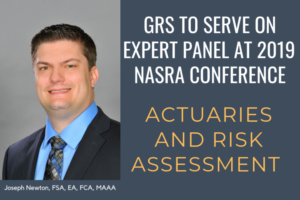Industry News
NASRA Releases Issue Brief on Disability Benefits in Public Retirement Plans
On July 31, 2019, the National Association of State Retirement Administrators (NASRA) released its issue brief, Analysis of Disability Benefits in Public Retirement Plans. In public retirement systems, disability benefits are intended to provide retirement income security for employees that are unable to work for an extended time period. The brief includes an: 1) overview of disability benefits; 2) benefit calculation methods; 3) eligibility standards; 4) vesting periods; and 5) duration of disability benefits.
According to the brief, “Although a long-term disability benefit is available to participants of every retirement system examined, a wide range and variety exist in benefit levels, eligibility criteria, and most other basic features that make up this benefit…. The expected duration of the disability varies among plans, with a minimum expected duration of 12 months and a maximum duration of permanent.”
The brief also provides a link to the full data set on a state-by-state basis for in-service and out-of-service disability benefits in public retirement systems.
The brief is available here.
